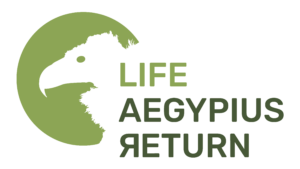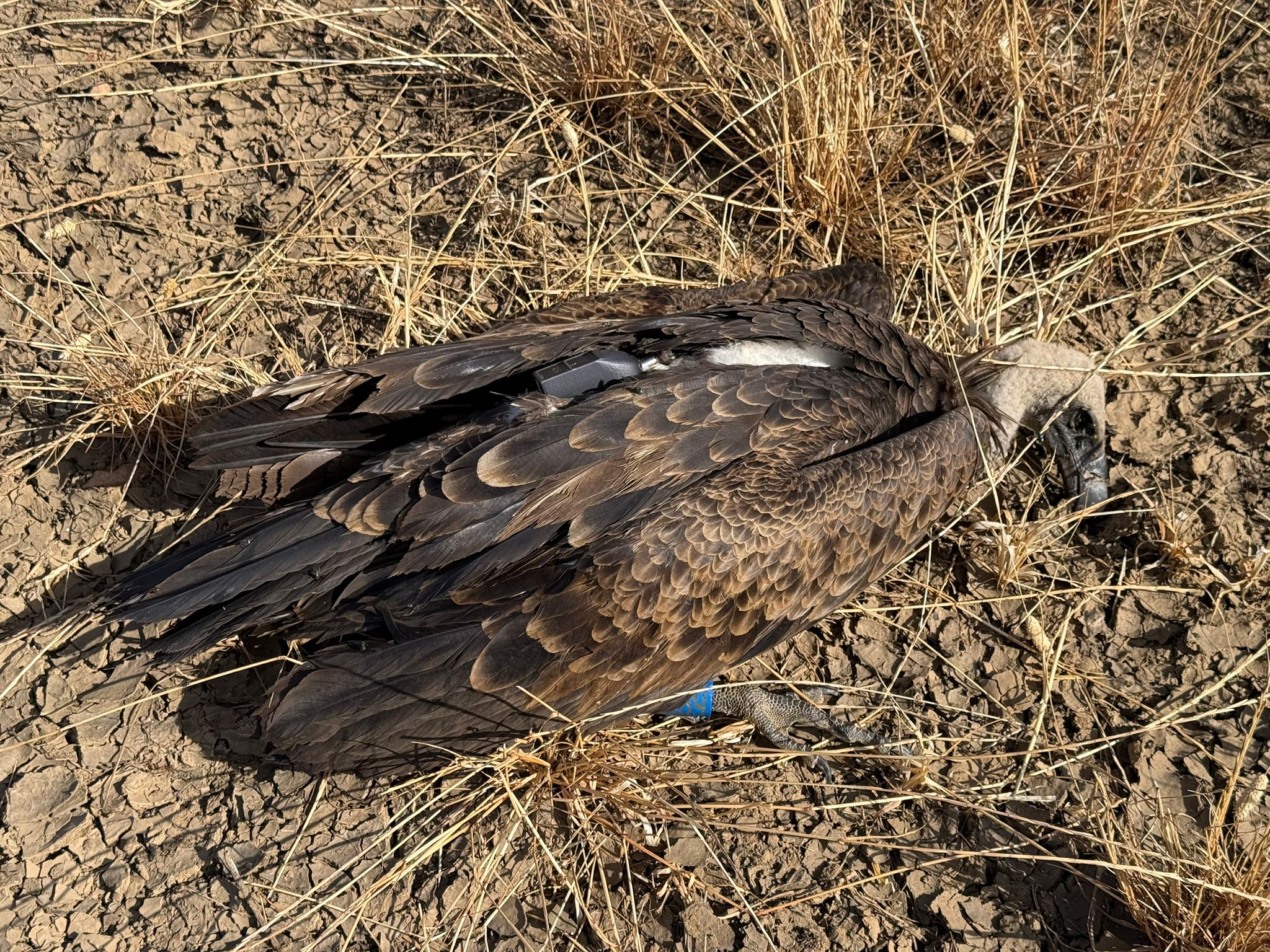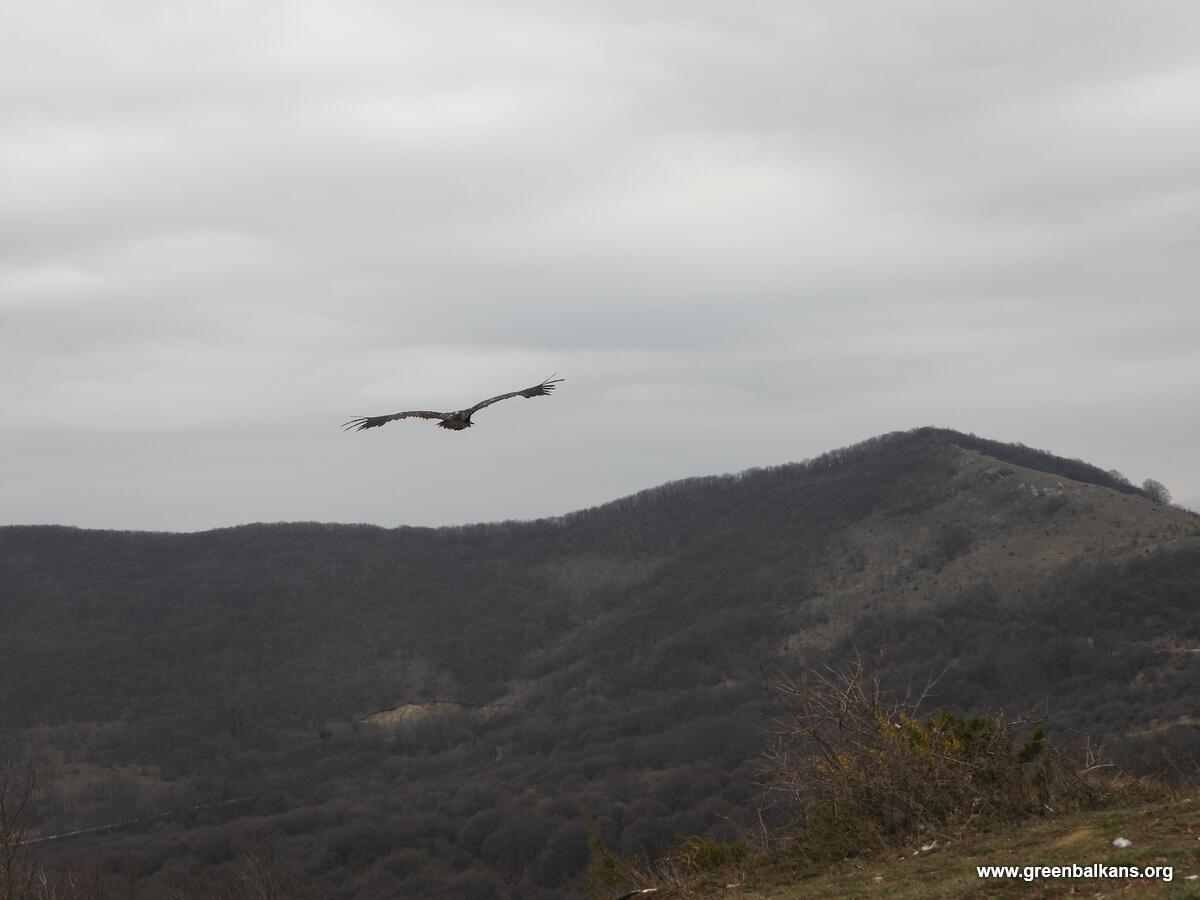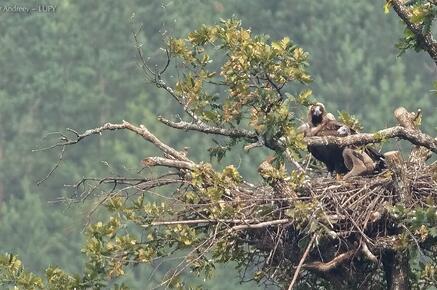According to the latest data from the projeto LIFE Aegypius Return project, there are 78 to 81 nesting pairs of Cinereous Vultures (Aegypius monachus) in Portugal. Of these, seven pairs are already on the Spanish side of the colonies, nests distancing less than 1000 metres from the border. The project, started a year ago to consolidate the return of the species in Portugal, brings together various organisations and partners working coordinately to boost the Cinereous Vulture population.
Year one of LIFE Aegypius Return brings hope for Cinereous Vulture recovery in Portugal
In 2022, there were around 40 nesting pairs estimated in Portugal; the high increase in this number (78-81 this season) results from careful prospecting for new nests, monitoring, and data coordination from various organisations. Despite the number of pairs, breeding success still needs to be higher, to ensure long-term survival of the species. Of the 50 chicks born this year, only 35-37 were recruited into the population, with a breeding success of 0.47. The project aims to guarantee favourable conditions for the Cinereous Vulture so that, by 2027, this parameter increases to a value above 0.5, i.e., at least half of the hatchlings fledge and join the population, ensuring renewal and continuity.

Project reveals at least 78 nesting pairs in Portugal, but breeding success is still relatively low
The monitoring teams confirmed 78 to 81 nesting pairs of Cinereous Vultures in 2023 in the four Portuguese colonies. Strictly speaking, seven nests are already on the other side of the border, in Spanish territory, although they are part of the Portuguese colonies ecologically. One of the project’s main milestones was establishing a robust reference situation for Cinereous vulture reproduction in Portugal. The work made it possible to monitor in detail each of the four colonies that currently exist in the country, promoting the coordination of efforts between the project partners and other organisations, whose contribution is invaluable for gauging the situation.
The Portuguese Cinereous Vulture population is distributed across four colonies
The Cinereous Vulture is Europe’s largest bird of prey. With a wingspan of almost three metres, this scavenger bird is considered Critically Endangered in Portugal. After its extinction as a breeding species in the country in the 1970s, the species established its first nest in Portugal in 2010, in the Tejo Internacional Nature Park.
The population is currently distributed in four colonies along the eastern border with Spain. Each Cinereous Vulture breeding pair lays just one egg. The chick’s hatching does not necessarily mean that it will survive and develop into a fledgling, at which stage it is considered to have effectively joined the population. In sometimes complex fieldwork, all these parameters are monitored in detail by the project teams since all observations must be made safely without disturbing the birds.
How many Cinereous Vulture chicks joined the population this year?

Douro International Nature Park
The most remote, isolated and fragile colony is in the Douro International Nature Park, monitored by Palombar in collaboration with the Northern Regional Delegation (DR) of the Institute for Nature Conservation and Forests (ICNF). This year, and for the first time since the species returned to the region in 2012, the colony had three nesting pairs. However, only two successfully left the nest.
Serra da Malcata
The Serra da Malcata colony has seen the most significant expansion, from six known nests in 2022 to 18 in 2023. Last year, two nesting pairs were recorded and this year, 14, resulting in eight chicks recruited into the population.
Although there has been a real increase in the number of nesting pairs in this colony, these results mainly demonstrate the importance of coordinating monitoring efforts. In 2023, technicians and monitors from ICNF – DR Centro and Rewilding Portugal articulated the methodologies for surveying and monitoring the species in the Serra da Malcata Special Protection Area (SPA), defined jointly under the LIFE Aegypius Return project, and obtained impressive results. The partner Associação Transumância e Natureza (ATNatureza) reinforced the search for nests in other regions potentially suitable for the species, such as Almeida and the Coa and Águeda valleys.
Tejo Internacional Nature Park
Tejo Internacional is home to the largest Cinereous Vulture colony in Portugal, with 44 to 46 nesting pairs recorded this year (five of which are located across the border), representing an increase of more than a dozen known nesting pairs. 20 to 22 chicks were recruited to the population, five of which were born in nests in Spanish territory, distancing less than 1 km from the border.
Sociedade Portuguesa para o Estudo das Aves (SPEA) was in charge of prospecting new nests and monitoring, with the support of Quercus and the ICNF, who had already been monitoring the species since its return. SPEA also surveyed habitats with favourable conditions for the species in Serra de São Mamede, Sever River, Serra das Talhadas, Vila Velha de Ródão and Serra de Penha Garcia. In these regions, species’ nesting was not confirmed.
Herdade da Contenda
Herdade da Contenda, located in the Mourão/Moura/Barrancos SPA, hosts the southernmost colony and has also seen an increase in the number of known nests occupied by Cinereous Vultures. Here, the monitoring work is carried out by the Liga da Protecção da Natureza (LPN), with the collaboration of Herdade da Contenda and ICNF. In 2022, this colony recorded ten nesting pairs, which has risen to 17 to 18 this year (two already in Spanish territory), resulting in 12 clutches and five fledglings.
Results from the Spanish SPAs
The project, through its partner Fundación Naturaleza y Hombre (FNYH), is also in charge of monitoring Cinereous Vulture reproduction in the Sierra de Gata y Valle de las Pilas and Canchos de Ramiro y Ladronera SPAs in Spain. 157 breeding pairs were reported in these two areas, producing 103 chicks that joined the population. The species has no confirmed nesting in the Campos de Azaba SPA, the third SPA in Spain covered by the project. Still, the FNYH monitors the number of Cinereous Vultures, Griffon Vultures and other species that travel to the feeding ground for scavenging birds there.




Monitoring and marking chicks in the nest
During the nesting period, teams of veterinarians and biologists from the project’s partner organisations momentarily removed 18 Cinereous Vulture chicks from the nest to take biological samples and analyse their condition. In addition, the chicks were ringed, and 15 were fitted with GPS transmitters, allowing the team to track the birds and analyse movement and dispersal patterns. The information received will also allow anomalous situations to be detected and, if necessary, timely intervention.
Biological, toxicological and genetic parameters will be analysed with the samples collected. This information is essential to increase the scientific knowledge and improve the conservation actions and veterinary care needed. During a visit to the nest, one chick required surgery and veterinary care at CERAS – Centro de Estudos e Recuperação de Animais Selvagens, where it underwent rehabilitation until it could be returned to the wild.

Improving breeding success
The significant increase in the number of pairs gives renewed hope for the future of the species in Portugal. However, with relatively low breeding success, the project’s partners are committed to favouring the species’ habitat and nesting conditions.
On the ground, conservation work already included the management of over five hectares of forest to prevent wildfires in areas where the species occurs and nests. Maintenance of natural or artificial nests is also one initiative that guarantees bird safety. This year, more than ten nests were intervened, some with immediate results and used by pairs. Additional interventions are planned for the near future.
The first year of the project shows that we are on the right track, with a coordinated effort between many organisations contributing to scientific knowledge, improving habitat and food conditions for the species, and reducing the threats to which it is subject. We want to consolidate the Cinereous Vulture population in Portugal and guarantee its long-term viability.
Milene Matos, LIFE Aegypius Return project coordinator
Ensuring the future of the species in Portugal
The project also includes a solid component to reduce threats to the species, including the fight against poisoning, since illegal wildlife poisoning is among the leading causes of death for vultures. In this context, in addition to collaboration with the GNR and the Antidote programme, the project aims to support the hunting sector in the transition to lead-free ammunition. In addition, police officers were trained on how to rescue and handle vultures and more capacity-building opportunities are foreseen.
The LIFE Aegypius Return Project
A LIFE Aegypius Return project aims to consolidate and accelerate the return of the Cinereous Vulture in Portugal and western Spain by improving habitat and food availability and minimising the main threats. The project team will implement specific conservation actions in ten Natura 2000 areas along almost the entire border between Portugal and Spain to double the Cinereous Vulture population in Portugal to 80 pairs in 5 colonies and thus lower the national status of the species from Critically Endangered to Endangered by 2027.

The projeto LIFE Aegypius Return is a 3.7 million project, co-financed by the European Union’s LIFE Programme, whose success relies on the involvement of all relevant stakeholders and the extensive collaboration of the leading project partner, the Vulture Conservation Foundation (VCF), with all local partners: Palombar – Conservação da Natureza e do Património Rural, Herdade da Contenda, Sociedade Portuguesa para o Estudo das Aves (SPEA), Liga para a Protecção da Natureza (LPN), Associação Transumância e Natureza (ATN), Fundación Naturaleza y Hombre (FNHY), Guarda Nacional Republicana (GNR) and Associação Nacional de Proprietários Rurais Gestão Cinegética e Biodiversidade (APNC).



